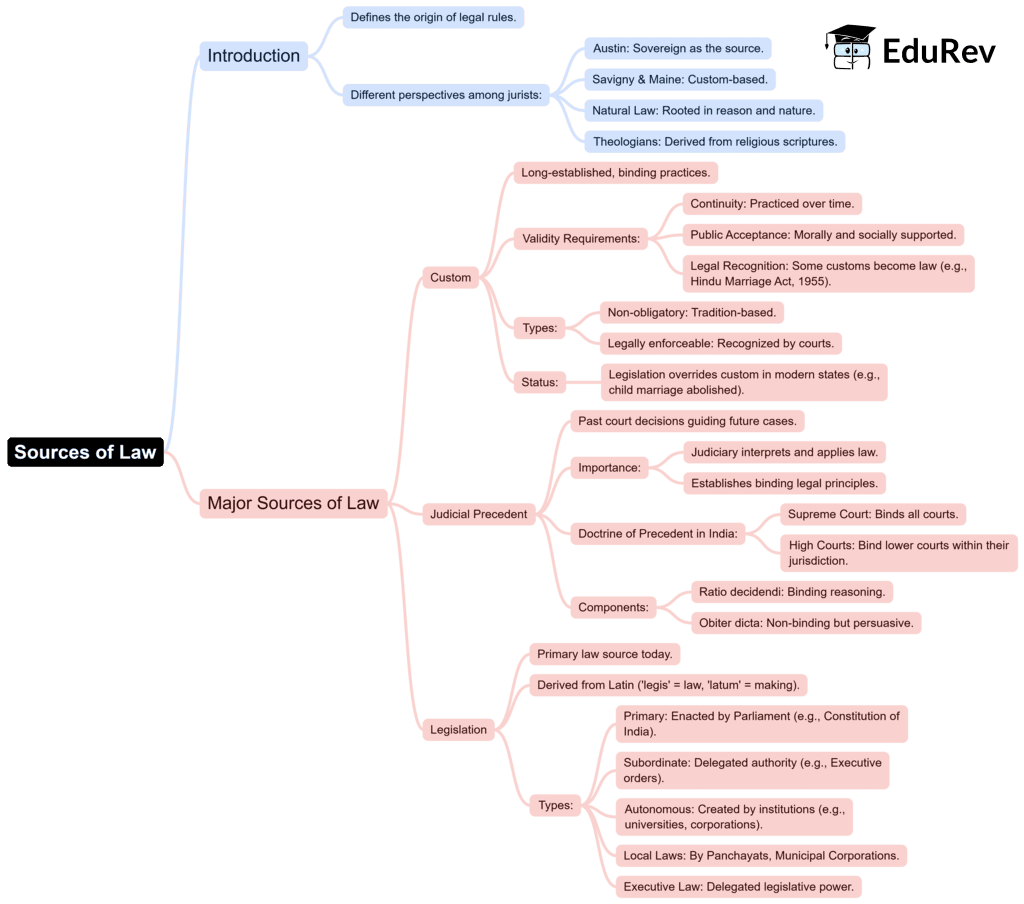Humanities/Arts Exam > Humanities/Arts Notes > Legal Studies for Class 11 > Mind Map: Sources of Laws
Mind Map: Sources of Laws | Legal Studies for Class 11 - Humanities/Arts PDF Download

The document Mind Map: Sources of Laws | Legal Studies for Class 11 - Humanities/Arts is a part of the Humanities/Arts Course Legal Studies for Class 11.
All you need of Humanities/Arts at this link: Humanities/Arts
|
69 videos|80 docs|25 tests
|
FAQs on Mind Map: Sources of Laws - Legal Studies for Class 11 - Humanities/Arts
| 1. What are the main sources of law? |  |
Ans. The main sources of law include statutes (laws enacted by legislatures), case law (judicial decisions), administrative regulations (rules made by government agencies), constitutional law (laws derived from the constitution), and international law (treaties and agreements between nations).
| 2. How do statutes differ from case law? |  |
Ans. Statutes are formal laws created by legislative bodies, while case law is developed through judicial decisions and interpretations of statutes. Statutes provide the framework for legal rules, whereas case law helps clarify and apply those rules in specific situations.
| 3. What role do administrative regulations play in the legal system? |  |
Ans. Administrative regulations are rules created by government agencies to implement and enforce laws passed by legislatures. They provide detailed guidelines and procedures that govern specific areas of public policy, ensuring that laws are applied effectively.
| 4. Can international law influence domestic law? |  |
Ans. Yes, international law can influence domestic law, especially in countries that recognize treaties and agreements as part of their legal systems. Courts may refer to international law when interpreting domestic statutes or resolving disputes, particularly in areas like human rights and trade.
| 5. What is the significance of constitutional law? |  |
Ans. Constitutional law is significant because it establishes the fundamental principles and framework of a government. It protects individual rights, defines the separation of powers, and provides the basis for legal interpretation and the validity of laws, ensuring that all laws comply with the constitution.
Related Searches
















